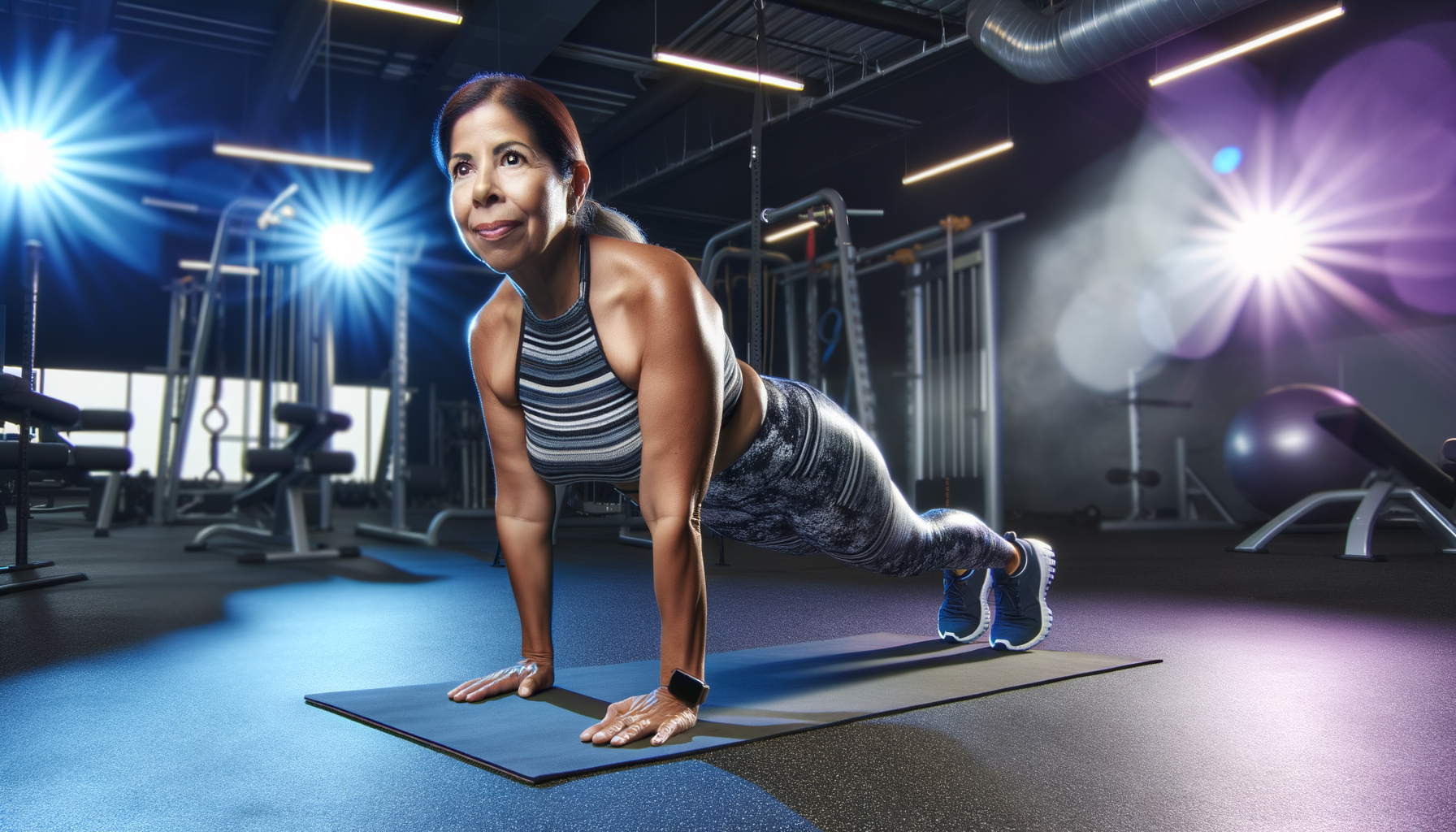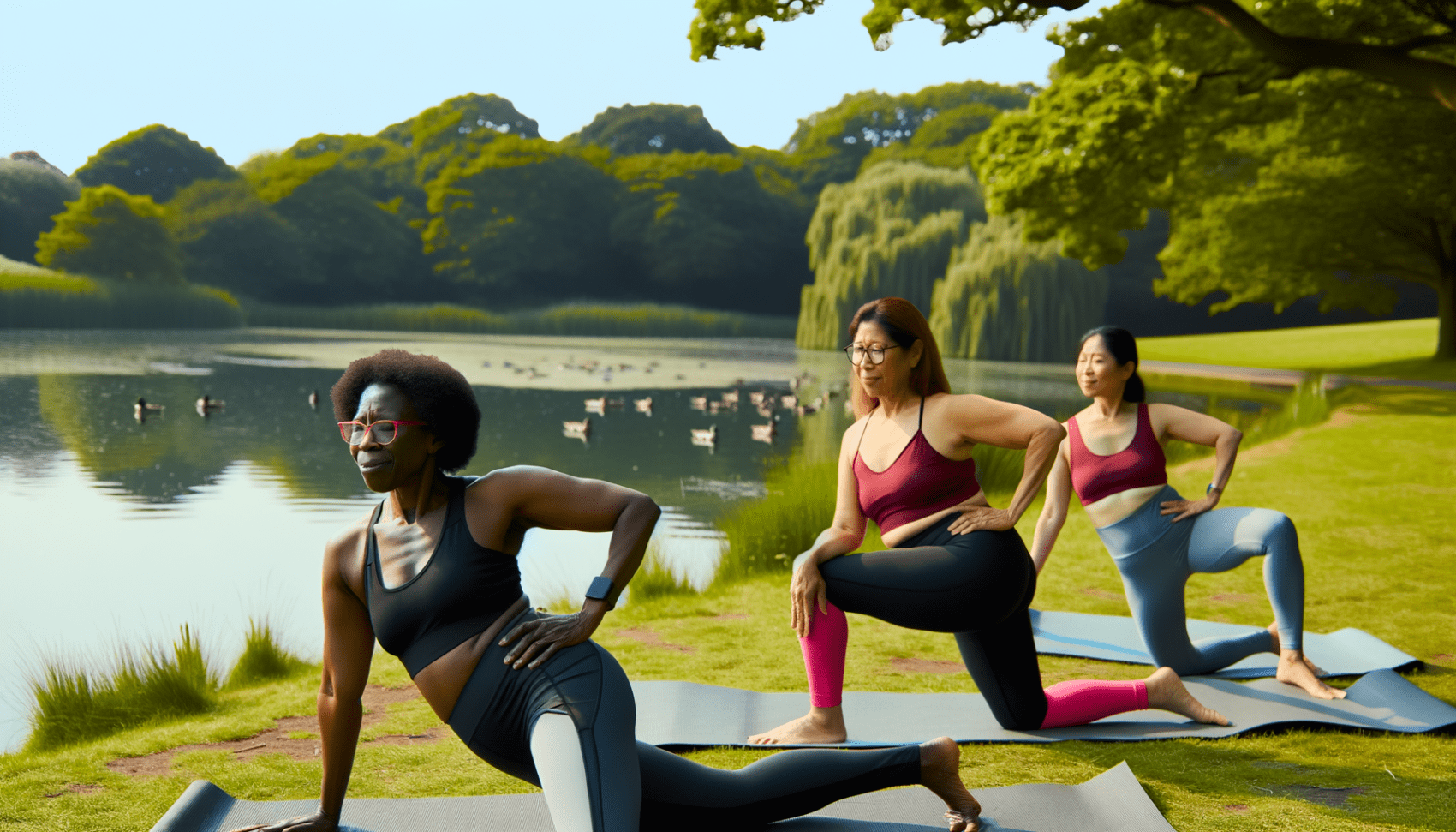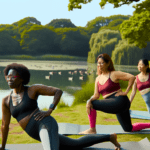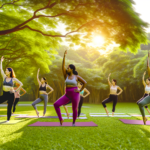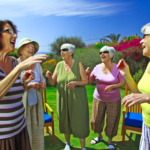The Challenge of Staying Fit Post-50
As we cross the half-century mark, our bodies undergo significant changes that can make staying fit a more daunting task than it was in our younger years. Muscle mass naturally diminishes, metabolism slows down, and the risk of chronic health issues increases. These factors combine to create a unique challenge for those over 50 who wish to maintain or improve their physical fitness, particularly when it comes to areas like the arms, which can quickly show signs of aging.
Personal Journey: A Wake-Up Call
For many, the realization that arm fitness is slipping away comes as a wake-up call. It might be a glimpse in the mirror, a comment from a friend, or simply the struggle to lift something that used to be easy. This moment can be a powerful motivator, sparking a commitment to take action and regain the strength and tone that time has eroded. Embracing this journey requires not just physical effort but also a mental shift in how we approach our health and fitness.
The Importance of Targeting Arm Fitness
Why focus on the arms? Beyond aesthetics, strong arms are essential for daily activities, from carrying groceries to picking up grandchildren. Targeting arm fitness can lead to improved functionality, increased independence, and a better quality of life. Moreover, working on the arms can have a positive effect on overall body composition, as muscle tissue burns more calories at rest compared to fat, aiding in weight management.
Setting Realistic Fitness Goals
Setting realistic fitness goals is crucial to success. These goals should be specific, measurable, attainable, relevant, and time-bound (SMART). For arm fitness, this might mean aiming to complete a certain number of push-ups or lift a specific weight within a few months. It’s important to remember that progress after 50 may be slower, and the body may require more recovery time. Patience and persistence, along with celebrating small victories, are key to staying on track and achieving the toned arms you’ve always wanted.
Understanding the Aging Process and Arm Flab
Biological Changes After 50
As we cross the half-century mark, our bodies undergo significant biological transformations. Muscle mass naturally decreases, a process known as sarcopenia, while fat distribution tends to increase around the midsection and limbs. Metabolic rates slow down, making it harder to maintain or lose weight. The skin also loses elasticity due to reduced collagen production, contributing to a sagging appearance. These changes are a normal part of aging, but they can be mitigated with the right lifestyle choices.
Why Arms Are Prone to Flabbiness
The arms, particularly the triceps area, are especially susceptible to flabbiness after 50. This is due to a combination of factors, including the natural loss of muscle tone, decreased physical activity, and skin laxity. The triceps muscles, located at the back of the upper arms, often go underutilized in daily activities, which can lead to reduced muscle mass and increased flab over time.
The Role of Hormones in Muscle Tone
Hormones play a crucial role in maintaining muscle tone, and after 50, hormonal changes can impact this balance. In women, the decline in estrogen during menopause can lead to a decrease in muscle mass and strength. For men, a gradual reduction in testosterone levels can have similar effects. These hormonal shifts can make it more challenging to build and maintain muscle, but resistance training and proper nutrition can help counteract these effects.
Psychological Impact of Physical Changes
The physical changes that come with aging can have a significant psychological impact. It’s common to experience a dip in self-esteem and body image as the body changes. This can lead to a lack of motivation to engage in physical activity, creating a cycle of decreased fitness and increased flabbiness. Recognizing these psychological hurdles is the first step towards overcoming them and embracing a healthier, more active lifestyle.
Understanding these factors is essential for anyone over 50 looking to improve their arm strength and appearance. With knowledge, dedication, and the right approach, it’s possible to fight the flab and achieve the toned arms you desire, regardless of age.

Pre-Workout: Preparing for Success
Consulting with a Healthcare Provider
Before embarking on any fitness journey, especially after the age of 50, it is crucial to consult with a healthcare provider. This step ensures that you are aware of any limitations or precautions you should take based on your health status. A medical professional can provide personalized advice and may recommend specific exercises or routines that are beneficial for your unique situation. They can also monitor your progress and help you adjust your fitness plan as needed to prevent injuries and maximize results.
Essential Workout Gear
Having the right gear is essential for a successful workout regimen. Invest in high-quality, supportive footwear that provides adequate cushioning and support for your joints. Comfortable, breathable clothing that wicks away sweat can also enhance your workout experience. Additionally, consider acquiring some basic home equipment like resistance bands or light dumbbells, which can be very effective for arm toning exercises. Remember, the right gear can make a significant difference in your comfort level and performance during workouts.
Creating a Supportive Environment
A supportive environment is key to maintaining a consistent workout routine. This could mean setting up a dedicated space in your home where you can exercise without interruptions. It might also involve finding a workout buddy or joining a community of like-minded individuals who are also focused on improving their fitness. Having people to share your journey with can provide motivation, accountability, and encouragement, which are all important factors in achieving long-term success.
Mental Preparation and Commitment
Physical preparation is just one part of the equation; mental preparation is equally important. Start by setting clear, achievable goals and visualize yourself reaching them. Cultivate a positive mindset and remind yourself of the benefits you’ll gain from improved arm fitness, such as increased strength, better mobility, and enhanced self-confidence. Commitment to your fitness goals is a commitment to your overall well-being. Embrace the journey with a can-do attitude, and remember that consistency is more important than intensity when starting out. With the right mental preparation and commitment, you’ll be well on your way to getting the arms you’ve always wanted, even after 50!
By the way, something for you, a little gift!!!
I am just in the middle of publishing my book. It’s about How women can balance their hormones. One part is about food and diet, of course.
Follow this link and enter your email.
I will send you this part of the book for free once the book is published. It has many concrete, practical tips and recipes and will help you feel better during menopause or times of Big hormonal fluctuations.
Annette, Damiva Lead for Health & Wellness

Nutrition and Diet for Optimal Arm Toning
Eating for Muscle Health
As we age, our dietary needs evolve, and for those over 50 looking to tone their arms, nutrition plays a pivotal role. Muscle health is dependent on adequate protein intake, which supports muscle repair and growth. Aim for a balanced diet rich in lean proteins such as chicken, fish, beans, and legumes. Incorporating a variety of protein sources ensures a spectrum of essential amino acids that are crucial for muscle synthesis. Additionally, foods high in omega-3 fatty acids, like salmon and chia seeds, can help reduce inflammation and support muscle recovery.
Foods to Embrace and Avoid
To optimize arm toning, embrace whole foods that are nutrient-dense and high in fiber. Vegetables, fruits, whole grains, and lean proteins should be the cornerstone of your diet. These foods not only support muscle health but also aid in weight management by keeping you satiated longer. On the other hand, avoid processed foods, sugary drinks, and excessive alcohol, as they can contribute to weight gain and hinder your toning efforts. Instead, opt for water or fruit-infused beverages to quench your thirst without the added calories.
Hydration and Its Effects on Skin Elasticity
Hydration is not only essential for overall health but also for maintaining skin elasticity, which can affect the appearance of your arms. Drinking plenty of water throughout the day helps to keep the skin supple and can improve its overall texture. Moreover, staying hydrated aids in the transportation of nutrients to the muscles, promoting better muscle function and recovery. Aim for at least 8 glasses of water a day, and consider increasing your intake if you engage in intense workouts or live in a hot climate.
The Impact of Small, Frequent Meals
Consuming small, frequent meals can have a positive impact on your metabolism and energy levels. This eating pattern can help regulate blood sugar levels, reduce hunger pangs, and prevent overeating. For those looking to tone their arms, this approach ensures a steady supply of nutrients to the muscles throughout the day, which is vital for muscle repair and growth. Include a mix of protein, healthy fats, and complex carbohydrates in each meal to fuel your body and support your arm toning goals.
Core Exercises for Toning and Strengthening Arms
The Push-Up: Technique and Variations
Push-ups are a classic exercise that effectively target the arms, chest, and core. Proper technique is crucial to prevent injury and maximize benefits. Begin in a plank position with hands slightly wider than shoulder-width apart. Lower your body until your chest nearly touches the floor, elbows bending back at a 45-degree angle. Push back up to the starting position, engaging your arm muscles and core throughout the movement. For those over 50, wall push-ups are a great variation to start with, reducing strain on the joints while still building strength.
Exercise Progression and Form
As you gain strength, progress to more challenging variations such as incline push-ups or traditional floor push-ups. Always prioritize form over speed or the number of repetitions. Start with a weight you can lift comfortably for 8 to 12 reps, and gradually increase the difficulty to avoid injuries. Remember to schedule rest days to allow muscles to recover.
Incorporating Cardio for Fat Loss
While strength training builds muscle, incorporating cardio is essential for fat loss, which will help reveal toned arms. Activities such as brisk walking, swimming, or cycling can help burn calories and improve overall fitness. Aim for at least 150 minutes of moderate-intensity cardio per week, as recommended for adults over 50.
Consistency and Routine Building
Consistency is key to achieving toned arms. Create a routine that includes arm exercises at least twice a week. This regularity, combined with a balanced diet and cardio, will lead to visible results typically within 9-12 weeks. Use a workout app or journal to track your progress and stay motivated.
Additional Exercises for Arm Strength
Other effective exercises for arm strength include:
- Seated Overhead Tricep Extensions: Sit with a neutral posture and extend a dumbbell overhead, slowly lowering it behind your head and raising it back up.
- Seated Lateral Raises: With a dumbbell in each hand, raise your arms to the side to shoulder height and lower them back down.
- Arm Circles: Extend your arms to the sides and perform small circles, gradually increasing the weight as you gain strength.
- Seated Arm Rotations: With arms extended, rotate your palms from facing up to facing back, adding light weights over time.
- Arm Bicep Curls: Curl dumbbells towards your shoulders and extend back out, focusing on slow, controlled movements.
- Standing Upright Rows: Lift dumbbells towards your chin with elbows out, then lower back down, keeping your spine neutral.
Remember to move weights slowly and with control, maintaining proper form to maximize effectiveness and prevent injury. As you progress, these exercises will help you build strength and achieve the toned arms you desire.
Do you know the three main ways that your body gets in touch with harmful chemicals with everyday products? Knowledge is Power!
The Ultimate Detox Guide will tell you how to lower your exposure to harmful chemicals!

Maintaining Motivation and Tracking Progress
Setting Short-Term and Long-Term Goals
Embarking on a fitness journey, especially after the age of 50, requires a roadmap to success. Setting short-term goals provides immediate challenges that are achievable, keeping motivation high. These could be as simple as completing a certain number of workouts per week or mastering a new exercise. Long-term goals are equally important as they represent the ultimate destination, such as achieving a specific arm circumference or being able to perform a set number of push-ups. Both types of goals should be SMART: Specific, Measurable, Achievable, Relevant, and Time-bound, to ensure they effectively guide your fitness journey.
The Role of Visual Progress: Before and After Photos
Visual evidence of progress can be incredibly motivating. Taking before and after photos is a powerful way to see the changes that may not be as noticeable day-to-day. These photos serve as a personal reminder of how far you’ve come and can be a source of pride and encouragement. It’s recommended to take photos from multiple angles in consistent lighting and clothing to truly capture the transformation.
Celebrating Milestones and Successes
Every step forward is a reason to celebrate. Whether it’s lifting heavier weights, noticing a firmer feel in your biceps, or receiving a compliment, acknowledging these milestones reinforces positive behavior. Celebrations can be small personal rewards or sharing achievements with friends and family. The key is to recognize the effort and dedication that has led to each success.
Adjusting the Routine as Needed
As you progress, your body will adapt, and plateaus may occur. This is a natural part of the fitness journey and a sign that it’s time to adjust your routine. Introducing new exercises, increasing intensity, or changing workout frequency can reignite progress. It’s also important to listen to your body and make adjustments for any discomfort or injuries. A flexible approach will help maintain momentum and ensure continuous improvement.
Remember, the journey to arm fitness after 50 is not just about the physical transformation but also about the mental and emotional growth that comes with it. Stay committed, be patient with yourself, and enjoy the process of becoming the best version of yourself.
Beyond the Arms: A Holistic Approach to Post-50 Fitness
Integrating Full-Body Workouts
While toning and strengthening the arms is a worthy goal, it’s essential to remember that fitness is a full-body affair. Integrating full-body workouts into your routine ensures that all muscle groups receive attention, promoting balanced development and reducing the risk of injury. Full-body workouts enhance overall strength, improve cardiovascular health, and boost metabolism, which can aid in fat loss from all areas of the body, including the arms.
The Importance of Flexibility and Balance Training
As we age, maintaining flexibility and balance becomes increasingly important. Flexibility exercises, such as stretching and yoga, can help improve range of motion, reduce the risk of muscle strains, and enhance recovery. Balance training, on the other hand, is crucial for preventing falls—a common concern for those over 50. Incorporating exercises like tai chi, Pilates, or simple balance drills can significantly improve stability and coordination.
Mental Health and Exercise
Exercise is not just about physical health; it’s also a powerful tool for maintaining mental well-being. Regular physical activity has been shown to reduce symptoms of depression and anxiety, boost mood, and enhance cognitive function. The social aspect of group fitness classes or walking clubs can also provide a sense of community and support, which is vital for mental health as we age.
Creating a Sustainable Lifestyle Change
Embarking on a fitness journey after 50 is not just about short-term gains; it’s about creating sustainable lifestyle changes that will promote health and vitality for years to come. This means setting realistic goals, finding activities you enjoy, and making exercise a regular part of your routine. It also involves listening to your body and adjusting your activities to match your energy levels and physical capabilities. Remember, the goal is to build a healthier, more active lifestyle that you can maintain over the long term.
By taking a holistic approach to fitness, you can fight the flab not just in your arms but throughout your entire body, leading to a healthier, happier you.

